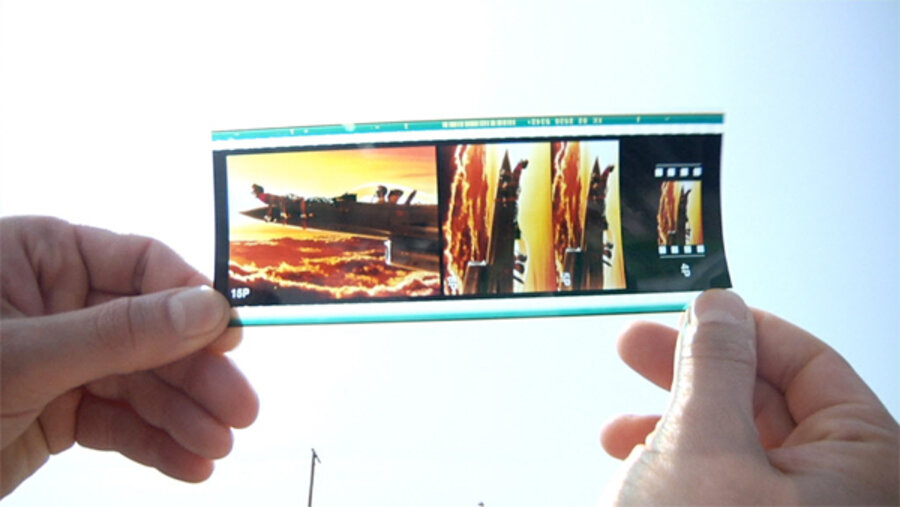Side By Side: movie review
Loading...
Chris Kenneally’s fascinating documentary “Side by Side” is about the impact of digital technology on modern-day movie-making. This may sound like a dry subject, but, as presented here, it’s anything but – especially if you have more than a passing interest in the art and science of what gets projected onto our movie screens these days.
Featured is an A-list roster of talking heads, including Martin Scorsese, Christopher Nolan, Steven Soderbergh, George Lucas, and James Cameron, as well as lesser-known but no less challenging commentators such as the cinematographer Ellen Kuras, the editor Anne V. Coates (who cut “Lawrence of Arabia”), and the wizardly sound designer and editor Walter Murch. Keanu Reeves, looking more like a scraggly film school grad student than a movie star, is the documentary’s host and guide. He asks good questions.
The primary question overhanging everything is: Is film dead? That is to say, is photochemical film, the standard for 100 years, rapidly on its way to being replaced by digital technology? The answer, judging from the evidence on view, is a qualified “yes.”
“Side by Side,” needless to say, was not shot on film. What this all means for filmmakers and audiences is complicated. On the one hand, even the digital era’s staunchest champions (such as Lucas and Cameron) admit that the richness, the grain, of photographic film is preferable to the best image quality that digital technology can currently offer. (One naysayer in the film complains that he’s not ready to turn in his oil paints for a box of crayons.)
A new generation of high-definition cameras from Panavision, Arriflex, Canon, and Red has improved matters substantially – and Reeves takes us inside the production facilities of these companies – but you don’t have to be a Luddite nostalgist to feel that something has nevertheless been lost in the transition, inevitable though it may be. The digital advocates make the point that, unencumbered by the restrictions of the old system, they can shoot for far longer periods of time on a single take without having to yell “Cut!” Reeves, speaking no doubt for many actors, isn’t altogether high on these open-ended takes. When acting in a digital movie, he often wishes he could say to the director: “Can you please stop?”
The biggest cheerleaders in “Side by Side” are, not surprisingly, Lucas and Cameron, who, more than any other directors, have pushed the digital boundaries of storytelling. Lucas’s achievements, though, seem purely technological at this point. Cameron, at least, makes the case for the new tools as an artistic necessity. “I wanted whatever we imagined to be something we could realize,” he says.
Because it is generally cheaper and faster to make a digital film than a photochemical one, the new technology (and the concomitant digital advances in editing and projection, also explored here) make it possible for people to make movies who otherwise might never have had the chance. The democratization of moviemaking that may ensue as a result of the Digital Age is potentially exciting, but it also means that a great many more lousy movies are going to get made (and yours truly will have to wade through them).
It must not be forgotten that advances in technology do not, by definition, result in advances in artistry. The history of movies is a history of change: from silent to sound, from black and white to color, and so on. Can anyone truly argue that, overall, today’s movies, at their current peak of technological sophistication, are markedly superior to the general run of films from earlier eras? The invention of the personal computer did not result in greater writers. A similar analogy, I think, holds true in the film world as well.
Still, there is great flux in this world, as “Side by Side” so entertainingly demonstrates, and where it’s all headed is both discomforting and exhilarating. Stay tuned. Grade: A- (Unrated.)







